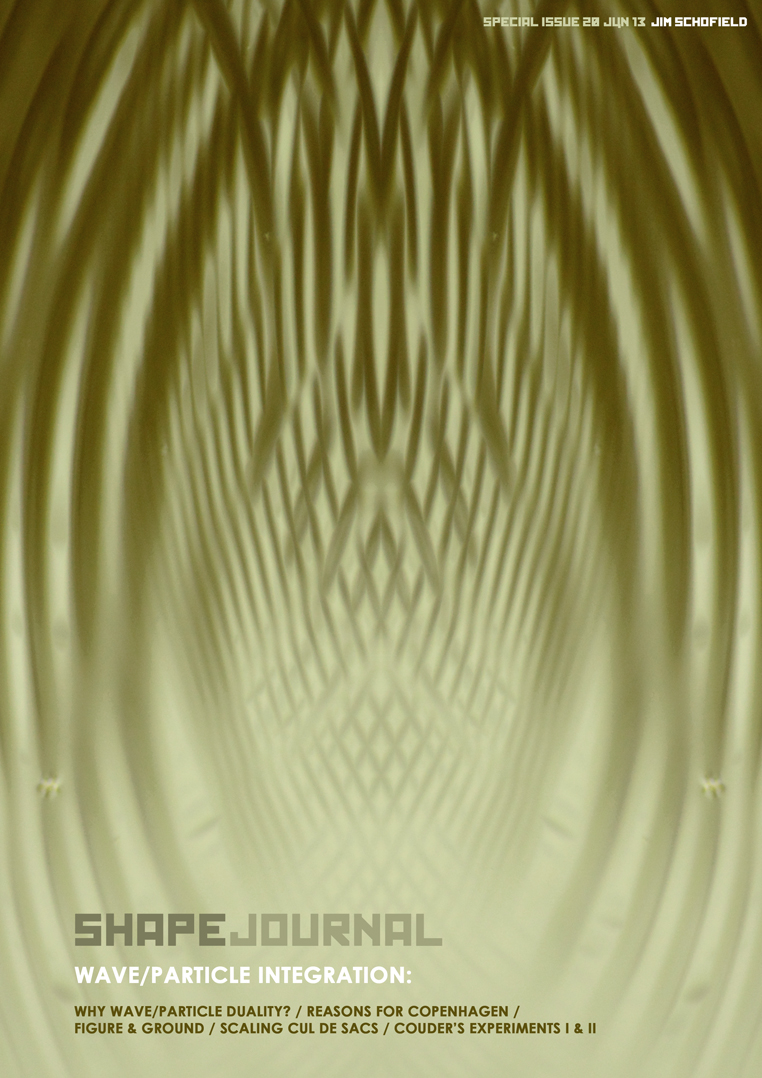The Dynamics of Change
Maths & Reality
I recently picked up a book that supposedly dealt with (among other things) the mathematics of change. The clear standpoint of the writer was the central position of mathematics in the forms and processes of living things. He contrasted mathematical formulae with genetic explanations of the structure of living things, and considered that the former explanations were largely underplayed.
The Mathematics of Change? That sounded interesting. I had to read on!
But, I must say I fell about when I got to the so-called nitty gritty. Our writer coolly talked about a parametered situation covered by some formula or another, but, merely as an aside, revealed that it was subject to external influences – forces which in a stable situation were undetectable and could be ignored, but which at certain points could overthrow the stability of the “internal” maths-controlled sub-system and destroy it. This may seem, as he obviously thought, as a normal, unavoidable situation, and so it is. But, he clearly failed to realise the significance of his admission.
When a quantitative relation is extracted from reality and fitted up with an appropriate mathematical formula, the context or ground is necessarily dumped. The whole strength of a mathematical treatment is this abstraction of an aspect of reality from the integrated, all-inclusive whole. The method allows of detailed study of a coherent fragment “outside of” the complexity and seeming incoherence of reality as a whole. It also allows the researcher to tap into a rich panoply of universal mathematical forms and techniques that are applicable in a wide range of situations. Now, as inferred above, the chosen maths form for a particular phenomenon is totally independent of the “external” context, as it must be if universal forms are to be defined for future employment. So, the chosen form can give no warnings, in itself, of the form of a catastrophic system failure. Indeed, it is NOT the sub-system that fails. For the sub-system once extracted and treated in isolation is “independent” of the original “context”. That is the power of an abstracted mathematical treatment, but, it is the extended context, including the sub-system, that becomes no longer viable, and a revolutionary change occurs. Now, many abstracted formulae DO, of themselves, give way-out results in extended circumstances. They give zeroes and infinities and similar off-scale results. So these could be said to indicate when the formulae fail. Except that many theories INCLUDE such blow-ups as being the mathematics of actually physically existing entities, such as Black Holes and many similar extrapolations from the maths into “reality”.
Now, how a mathematician can make such system-change upheavals the subject of a discussion based entirely on extracted mathematical formulae beggars belief. If the system just blows up (and remember ALL mathematics is by definition ONLY about sub-systems) then how does the sub system mathematics deal with the event that is determined externally by his own admission? Where does he get the relevant equations from?
Now, I really must not convert this paper into a full treatment of the described writer. That is NOT my purpose. It was brought in as an appropriate preface to the real subject of System Change.
System Change
Now, in this area, it seems to me that there are two distinct and equally important aspects to the area of study. Firstly, it CANNOT be mathematical formulae that deal with these events. They are too limited in scope, and at the same time too universal in applicability. They simply don’t INCLUDE the necessary factors within them. The source of answers must be in forms that DO attempt much wider syntheses. These are the methods of scientic, analogous EXPLANATIONS. The second vital consideration has to be to focus study on the detailed and compressed events that constitute the actual process of revolutionary change. We must study the narrow time slot, within which the changes first begin to appear, then form sequences of temporary intermediates, until some NEW re-organisation, coheres into a different stable system.
We must approach the problem scientifically (not mathematically) and crucially also dynamically!
A Case in Point
In almost all my personal researches over many years, these sort of dynamical overturns are evident, and yet they are generally largely unknown and unstudied.
I will now relate an appropriate case of such studies, though those who have read other papers by the author may well already be familiar with it. To them I apologize, but its inclusion is in this discussion unavoidable.
Some years ago, I was working in what has since been promoted to a full Scottish University in Glasgow. There I got to cooperating, when appropriate, with some of my colleagues in other departments. I helped when I could (mostly on computer programming and graphics isualisations) but there was little doubt as to who was doing the significant contributions (and it wasn’t me!) My colleagues in the work I am about to describe were a research chemist and an Indian mathematician. They were working together on chemical reaction fronts in liquids. I had to ask them exactly what these were, and immediately realised that these scientists were investigating just the sort of dynamic changes that I have attempted to describe above.
Instead of adding the reactive components together, stirring well, then waiting for equilibrium conditions before anything was attempted to ber measured, they instead took the greatest pains to allow of NO disturbances to the natural processes whatsoever. They spent a great deal of time finding what they considered an appropriate reaction. First, it had to be an oscillating reaction, where initially
A + B became C + D,
and then quite soon after a threshold had been passed, and the reaction REVERSED so that
C + D became A + B.
They searched, and found such a reaction, where the products at either end were clearly differently and contrastingly coloured.
So, let us see what happened.
In breathtakingly still conditions, the necessary components were brought into contact. The reaction started, and at first nothing could be seen. As the reaction proceeded a new colouring became evident, not everywhere, but only on the actual reaction front. A line of new colour was being laid down. Subsequently, as you have doubtless already guessed, the reaction finally passed the expected threshold, and began to reverse - this time producing the original colour again. As the process went on and reversed several times, a banded two-colour structure began to unfurl in 3D space, and its form gradually became clear. It turned out to be a Toroidal Scroll.
Instead of adding the reactive components together, stirring well, then waiting for equilibrium conditions before anything was attempted to ber measured, they instead took the greatest pains to allow of NO disturbances to the natural processes whatsoever. They spent a great deal of time finding what they considered an appropriate reaction. First, it had to be an oscillating reaction, where initially
A + B became C + D,
and then quite soon after a threshold had been passed, and the reaction REVERSED so that
C + D became A + B.
They searched, and found such a reaction, where the products at either end were clearly differently and contrastingly coloured.
So, let us see what happened.
In breathtakingly still conditions, the necessary components were brought into contact. The reaction started, and at first nothing could be seen. As the reaction proceeded a new colouring became evident, not everywhere, but only on the actual reaction front. A line of new colour was being laid down. Subsequently, as you have doubtless already guessed, the reaction finally passed the expected threshold, and began to reverse - this time producing the original colour again. As the process went on and reversed several times, a banded two-colour structure began to unfurl in 3D space, and its form gradually became clear. It turned out to be a Toroidal Scroll.
NOTE: Imagine a line, becoming a sheet, which itself followed a curved trajectory gradually building up a doughnut shape – a torus composed of a scroll!
This is crucially an example of what is going on in ALL chemical reactions in liquids, but is usually invisible and also never even studied. What did they use to insist upon in my youth? “Stir well and then wait for equilibrium conditions, or your result will be chaotic and uninterpretable!”
Now such dynamical transitions are not restricted only to liquid chemical reactions or even to reactions of other diverse sorts. They occur whenever systems flip over!
Intelligent(?) Crystallisation!
My current work, of necessity, has pressed me into looking at the formation of crystalline structures from solutions or a melt, and quite apart from the obvious chemical, mathematical, and even symmetry contributions, the normal products of crystallisation are NOT predictable in detail. All sorts of aberrations, twinnings and many other “errors” certainly occur. What then is the dynamical situation at the crystallisation “front”? Why is some sort of “seed” necessary, and what ensures (if that is possible) the guaranteed production of a perfect single, coherent crystal lattice? On studying various models of crystallisation, I came across various features that had to occur in crystallisation, at least sometimes, which were, in effect, failures. Several types were revealed theoretically. First, there were the possibilities of alternate stacking forms.
[NOTE: These may not be common, or even possible, in normal inorganic crystallisation, but my work is specifically concerned with re-entrant shapes – forms which definitely are common among organic molecules. Remember even viruses can be crystallised!]
These alternatives could also be incapable of producing extended forms, that could completely and coherently fill space. They could even be only “locally” symmetrical (as in snowflakes), rather than possessing the translational symmetries essential for continuous space filling. In addition, crystallisations could start at several separated centres, and grow towards one another, and these could easily be of different types and incapable of seamlessly fitting together at the interface.
Now all of this does reflect real crystallisation processes, but surprisingly, it is not these messy situations that pose the most telling problems. It is the freak situation of the crystallisation of a large perfect single crystal!
How on earth does this happen? How can every single additional molecule march into exactly the correct place, in the most coherent and extendable way. And how are alternate sites for the commencement of srystallisation inhibited to prevent the consequent problems associated with these? These things surely cannot be wholly achieved by chance, can they?
Let us study what happens as molecules moving about randomly on solution (or the melt form) and then add on to some already existing crystal. Remember, alternative stackings are possible which in the longer run will turn out to lead to aberrations- to the wrong phase, or even in extendable forms leaving unfillable gaps. How do JUST the right options take place? Could it be that the process of crystallisation, molecule by molecule, is not a simple flip? Could it be that there is a transitional period in which the molecules (still moving independently) jostle around the already solid core, ready for integrations, effectively moving in and out from possible attachment sites, along with the other closely situated molecules, until a MINIMAL, or optimum situation is reached, when the actual connections are triggered to commence in the ideal and extendable way?
A Causal Trajectory of Change?
We would then have, once again, a process, compressed in time and space, which contained the dynamic adjustment of optimal crystallisation. Now these are only a couple of instances from my own experience, I am already convinced that such dynamical, micro-scale and short-lived transition systems DO indeed exist. Crucially, we must address the inter regnum between two stable regimes, each of which is generally dealt with by abstracted mathematical formulae, neither of which can in any way contribute to the content of such a transition process – particularly in its causal trajectory.





